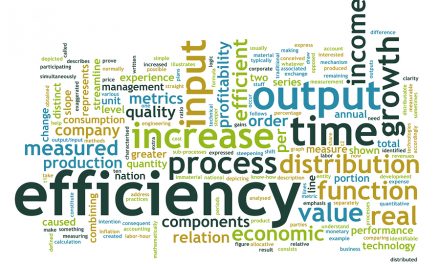The key to any successful business will be found in its communication systems
For any business with more than 1 person, a clearly followed communication structure is essential if the business is to run with as little firefighting as possible.
Good communication starts from the very outset of any person’s journey within an organisation, as early as the initial interview, or company formation.
Understanding the mission of the company and what your role is so you are clear on your purpose will make what you do each day count.
An aimless set of instructions without any meaning can lead to despondency and lack of motivation.
Being communicated to in a way that makes you feel valued as part of a bigger story will ensure that you believe in what you are doing and give it every bit of effort you have in you.
But it doesn’t stop there, because people forget! They forget why they do what they do after days and weeks of working at the same things and the belief and motivation can be easily diluted with the monogamous day to day operations of their role.
So how can we keep our people motivated and reminded of how important they are to the team, and how important their customers are to the operations of the business?
Consistent but fresh communicating within the team will ensure that they always get to have a voice, they know what else is going on within the departments of other people, and that they are always aware of any transitions between theirs and other areas of the business, avoiding potential future issues.
Tools to help with the information that is communicated will include reporting and KPI’s.
Constant monitoring of the numbers gives knowledge to everyone in the business and a basis for action plans and strategies.
Do you Huddle?
“The Huddle” is a term for a 15-minute meeting held daily at the same time in which you bring forward a few key pieces of reporting or information for the part of the operation that you are responsible for.
The person holding the huddle, usually a manager, will work around the group getting the figures and facts, so everyone in the overall process is aware of what is happening either before or after their part of the process.
This daily routine keeps everyone aware of what is happening, and importantly, any issues that have arisen during the process enabling them to make a decision before the fire ignites.
Knowing what’s coming up and what has just happened enables us to make our own decisions within our areas without having uncertainty or doubts or having to make dangerous assumptions because we think something has/hasn’t happened.
Miscommunication leads to roadblocks and then the need for reactive communication which will usually result in everyone’s workflow being halted while the problem is sorted out.
This can be avoided by putting in place great systems and processes which will have been effectively communicated to all team members during training sessions.
Verne Harnish, author of “Scaling Up – Mastering the Rockefeller Habits” describes this as The Meeting Rhythm.
“To move faster, pulse faster. At the heart of a team’s performance is a rhythm of well-run daily, weekly, monthly, quarterly and annual meetings. These meetings bring focus and alignment, provide an opportunity to solve problems more quickly and ultimately save time”
Steve Jobs credited the creation of the iPhone to the daily ritual of having lunch with the device’s designer Jonathan Ives.
Using Digital Communication Tools
CRM systems with staged processes which trigger alerts or communication emails should be used wherever possible.
Automated Electronic communication will outperform human communication every time because the machines don’t get distracted or forget!
In the age of instant messaging, email and social media, all of these tools can be used within an organisation to ensure all team members get to see what’s going on real time and not just when an issue is reported.
Depending on the activity of the business will determine what type of tool you use, there is no shortage of free apps that cover a whole range of communication capabilities where the sharing of text, video, imagery, audio can be effectively shared around the team in a split second – How could you use a free app to stay connected to your team?
Customer Communication.
A recent survey in the Real Estate world showed that 80% of house sellers chose the first estate agent that returned their call.
Therefore, being on top of your incoming enquiries and making sure your first communication with your client is a phone call, and fast, is the beginning of a successful House Sale.
Why spend thousands on marketing just to lose the client to your competition because you couldn’t either answer the phone when it rang, or at least return the call within a very short timeframe.
Constant communication thereafter should be as automated as possible, but not entirely.
Customers buy from people they know, like and trust. So a healthy weave of value-based information emails or media giving them all the information they need, which they can archive for reference, and a personal phone call every few days to let them know you care can be a winning formula for most businesses.
“People don’t care how much you know, until they know how much you care.” – John Maxwell
CRM systems can help again with reminders to ensure during the busy days most of us have to deal with, that we don’t lose the customer by not following a system.
How are we doing?
One of the fastest ways of losing a team member is not communicating how either they or the organisation is doing.
When people don’t know how they are performing, fear, uncertainty and doubt can creep in, motivating them which will most likely result in disciplinary action or them leaving the organisation.
“People don’t care how much you know, until they know how much you care.” – John Maxwell
Measuring everything from the performance of each member with their own set of KPIs, to the overall performance of the business (or at least their department), should be regularly communicated in the daily, weekly, monthly, quarterly or annual meetings so people know that what they are doing counts for something.
They feel valued, enjoy their work and ultimately create more success within the business making it a more enjoyable and profitable place to work.
It’s easy for the business owner to be weighed down with the overloaded schedule that he or she has, to look at communication and measuring as unproductive work when there’s paid for action that needs to be done.
The reality is, that this is one of the invisible secrets to a thriving and profitable business.
It’s often not directly or immediately measurable, but without it, it’s a race to the bottom.
What could you do to improve your communication with your team?
Could you start with the daily huddle?
If your team works remotely, use Facetime or conference calling to bridge the gaps, but make this an essential part of your day at a set time each day.
Each person should bring 3 pieces of information that should be clearly and accurately stated:
- What’s up (In the next 24 Hours)
- Their daily metrics (Sales made, cases closed, enquiries received etc)
- Where are they stuck?
Most issues are resolved at this level. More often than not someone else will have either some information or the offer of help that will get you unstuck.
Great references for communicating are the books “Scaling Up” by Verne Harnish – or “The Advantage” by Patrick Lencioni.




